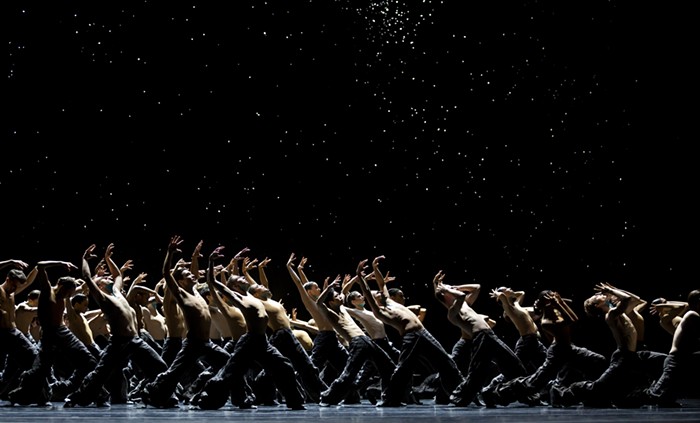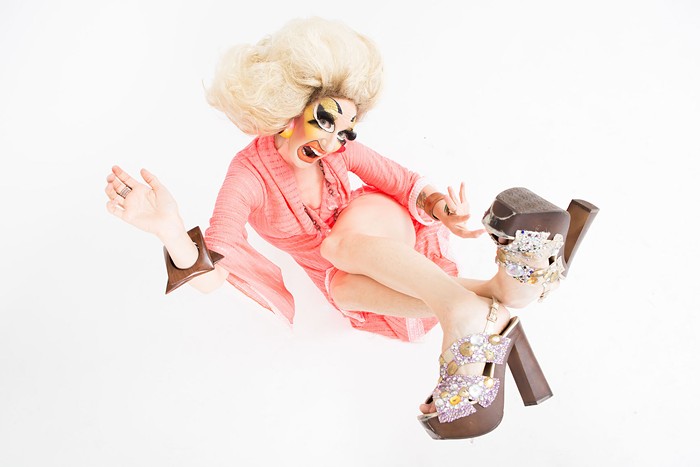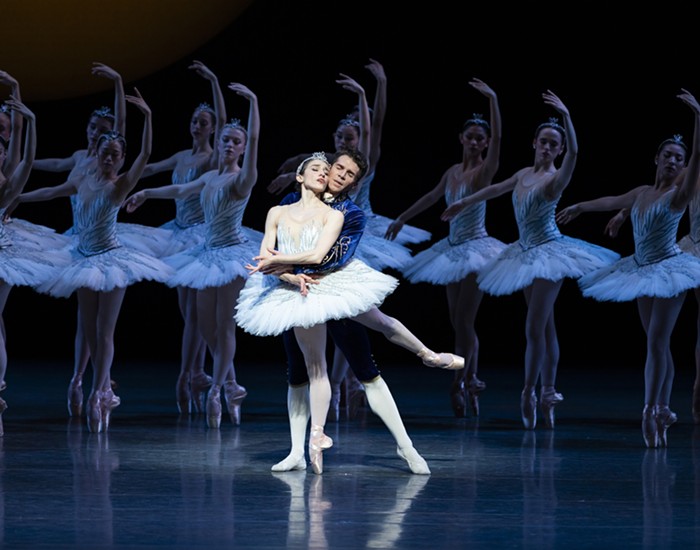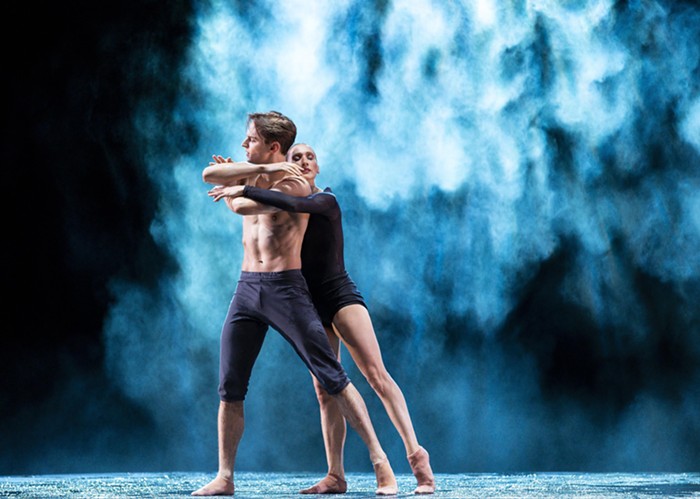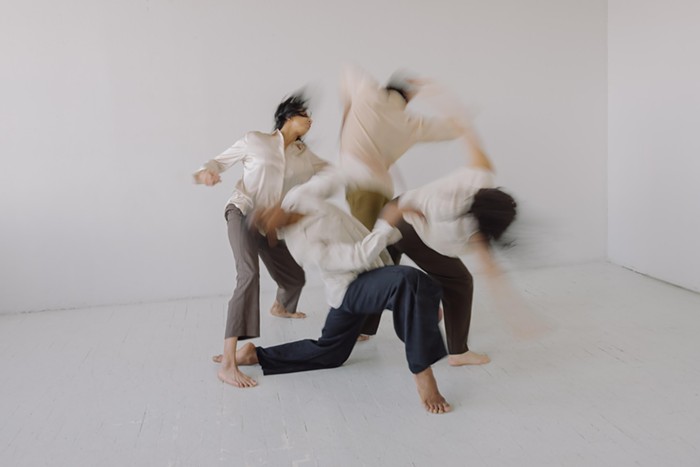Last Friday at 12th Avenue Arts, the Seattle Project and Velocity Dance Center premiered here because, an evening of contemporary dance that aimed to answer a few of the questions implied by the show's title; namely, why are all these dancers working together here in Seattle, and how come they haven't moved to LA or New York yet?
Though I left the theater still wondering a little about the precise ways in which Seattle as a place influenced the dancers and their movements, I felt little doubt about how lucky the city was to host such talent.
For the show, the Seattle Project, a group run by choreographer and Pacific Northwest Ballet Soloist Amanda Morgan and Managing Director Zane Ellis, tapped local dancers Jane Cracovaner, Rodrick Barnes, Symone Sanz, and Zsilas Michael Hughes, in addition to Morgan herself.
The evening began with pretty video from Henry Wurtz that featured montages of dancers whirling around as the voices of local big-wigs in the dance world delivered optimistic visions of the industry's future tempered only by the recognition of the challenges of carving out a dance career while trapped in one of capitalism's hardest and brightest jewels.
The subsequent group dance enacted that concern, with all the dancers in black taking turns improvising in the spotlight. As they wheeled around the stage like blown leaves, they variously helped each other and hurt each other, occasionally alining for a moment of solidarity before shattering and dispersing again. A bright shaft of light stilled them and offered a path out of the chaos.
After that intro, each dancer presented their own piece, and each piece was preceded by a little introductory home video interview that informed the dance in some way.
Rodrick Barnes kicked off the showcases with dark, gritty electronic music from Daft Punk and Fatboy Slim. He roamed the stage in a red, sleeveless raincoat, executing tight spins and impressive kicks inspired by the martial arts. The moody piece projected the energy of a man wandering city streets, fighting prying eyes and inner demons in the dark before ultimately and suddenly dropping dead from exhaustion.
Then the sun rose on Jane Cracovaner in an off-white dress with a red floral pattern that wouldn't look out of place on a cattle ranch. The thrumming guitar and long whistles in Molly Lewis's "The Green Ray" transformed the bare stage into a lonesome desert through which she tumbled like a graceful weed. She juxtaposed her smooth, rounded movements with disarming redirections, as if some puppet master attached strings to each of her joints and limbs that he'd pull at random. The effect reminded me of the way people manipulate 3-D objects on computer design programs. Good stuff.
In the video interview before their dance, Zsilas Michael Hughes, who dances on the corps de ballet with PNB, spoke of the two major selves that swirl within them; one loud and boisterous self, and a quieter, shy self that loves peace and silence. Their subsequent dance perfectly embodied those personalities. Hughes began by simply walking onstage in a red satin dress. Though they looked stunning, they gave the audience a nervous wave, looking uncomfortable as they stripped off the dress and got to dancing. What followed was a premium fusion of ballroom and classical movement that reached a kind of apotheosis when they spun around a million times while voguing, hitting every beat with X-Acto knife precision. With their technical skills, acting chops, and magnetic stage presence, Hughes looked like a generational talent in the making—if not already fully made.
Though Hughes probably delivered the most realized and impressive show of the night, Symone Sanz, who has worked with the likes of Cherdonna and zoe | juniper, and who serves on the board at Velocity, blew me away with her performance. To begin, the tinkly piano used in Hughes's piece yielded to the screaming black metal of a song by Anti-God Hand. Sanz then artfully blended some breakdance stuff with the pedestrian movements you see at rock shows (head-banging, hair whips, thigh-slapping, windmill arms) with weird moves from horror films (at one point she crawl-slid across the stage like that creepy woman who crawls out of the TV in The Ring). It was mesmerizing, energizing, and weirdly gripping—I probably could have watched her with interest for another hour.
Morgan, who became the first Black woman soloist in PNB's history last year, closed out the showcase section with a real driving, rhythmic number. Her movements looked both confrontational and self-protective, feline and formal. The most moving moment came toward the end, when she appeared to be trapped in the spotlight. She patrolled its edges, fighting off shadow enemies and trying to stay afloat until the all-consuming darkness killed the light and saved her, bringing some mixture of relief, defeat, and victory. A fitting metaphor for an artist who works with such facility on and behind stages both big and small.
To close out, the whole group took the stage, swapping their black clothes for light-colored clothing. Hopeful, soaring music from Porter Robinson filled the air as the dancers moved to the beat of their own drums, but this time without the chaotic darkness that troubled the first group dance. As the lights rose, the ritual felt complete. A sense of community had been achieved, at least for the night, and, so long as the Seattle Project is still around, for the foreseeable future.


